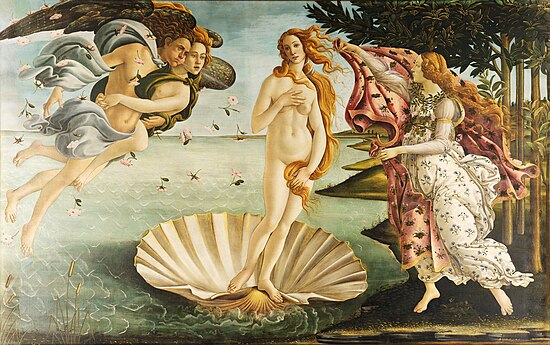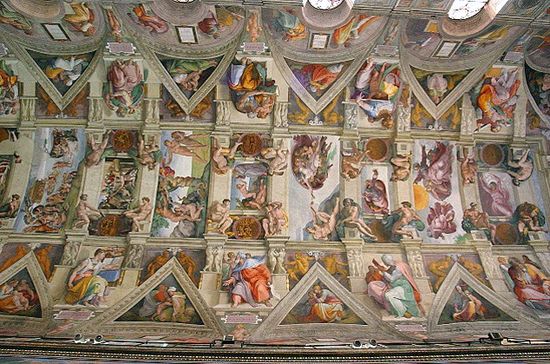I am an atheist, and a passionate secularist - that is, I believe in full separation of church and state, that none of our laws or systems of government/judiciary , or any state bodies such as the health care system or education system should have any grounding in religion or its teachings.
I see great horrors that have been, and continue to be, committed in the name of religion. Female genital mutilation, jihad, the crusades, the pogroms against Jews all over Europe, witch burnings. The list could go on and on and on, describing death - murder - and abuses of many kinds.
However, I do see beauty in the legacy of religion as well.
Take these songs:
Silent night
Away in a Manger
Just two examples. Yes, they are religious. Full on, virgin-birth, angels and Jesus as god religious. However, they are also beautiful. The music more so than the lyrics perhaps, but I do find great beauty in the whole package.
Are there beautiful secular songs? Well perhaps any song that speaks of love of a person, or of the world, without a religious undertone (or overtone), or actually anything at all other than religion, is a secular song. So that is most of the music ever composed, including many modern Christmas songs. Nevertheless, can we ever have too much beautiful music? Should we stop playing religious music just because it's religious? I don't think so.
The Christians stole Christmas from the pagans. I am sure
that most modern religious festivals have a pagan heritage, as every
society in the world was once pagan of some sort. So why can't the
secularists "steal" some of it from the Christians, Muslims, Buddhists
etc?
And then we have art.
Some of the most beautiful paintings have a religious motif.
E.g. The Last Supper by Leonardo daVinci
in which we see Jesus and the apostles at the scene which forms the basis for most of Christianity (the bread anf wine as the body and flesh of Jesus).
Botticelli's The Birth of Venus,
which depicts a nude, gorgeous goddess emerging from a seashell.
or of course, the roof of the Sistine Chapel
These are amazing works of art. Should we disregard them because they depict religious scenes? of course not. They were painted by some of the most skilled artists of their time.
Especially with respect to the Christian scenes, the church at the time of the Rennaissance was a very welathy and powerful patron (at least in part due to the corruption that led to the Reformation, but that's a story for another day!). This was a time before government grants to artists, before such a thing as the Office of Public Works existed, before social welfare for people who weren't working. Earn money to feed yourself, or starve, were the options of the day. So if a wealthy patron offered you the chance to express yourself and your hard-practised talents (Michaelangelo was a grave-robber by night, using cadavers to learn about the human body in order to paint and scult it more accurately), with the caveat that the paintings must contain religious imagry, most would take up the offer, especially at that time.
Religions have been creating things of great beauty for much longer than that though, of course. There is Newgrange, in Co. Meath, Ireland - built approximately 5000 years ago, at the same time as the pyramids. There are the great pyramids of Egypt themselves. There are petroglyphs carved by Native American tribes. There is the cave art of early European societies, most famously Lascaux. These are all expressions of creativity. They refer to sacred spaces, things and thoughts. They are symbols created or built in the name of understanding the world around us. These were all created at a time when religion and science were not at odds. In Newgrange, on the Winter Solstice, the shortest day of the year, the light comes in through to the deepest chamber. That's astronomy as well as religion.The cave art may be an attempt to understand the "spirit world", the supernatural, but it is also the earliest form of the idea of symbolism created by humans, the ability to use a mark to symbolise a real thing, which lead to all other forms of art and writing and is one of the beautiful, abstract things which marks us out as different to other animals (due to our brain evolving differently).
Religion may have started off as a way to understand the world around us. It went hand in hand with science. It was about discovery and exploration, not dogma. It was about trying new things - to appease the gods, people did a rain dance, or made a sacrifice. When something appeared to work they did it again, when it didn't, they stopped. All right, it was chance and not a metaphysical being that caused the apparent effect or lack thereof, but still, that is in principle closer to modern science than it is religion.
At some point, religion decided it had all the answers. No more exploration was needed, no more attempts to discover.
So while objects of great beauty continued to be created, the aim of religion changed. Instead of seeking to discover, it sought to explain and dictate. To control. The opposite of the essence of where it started.
Nevertheless, the desire to explain things that we can't yet understand is a facet of humanity, and religion was once a way to do so. Now, science is a better way. We can enjoy the art, and the music, and continue to explore the universe and always ask why.



No comments:
Post a Comment